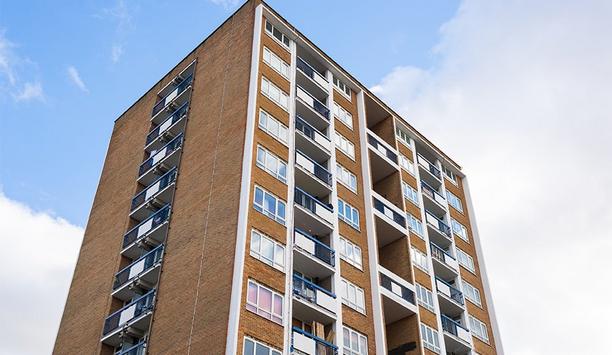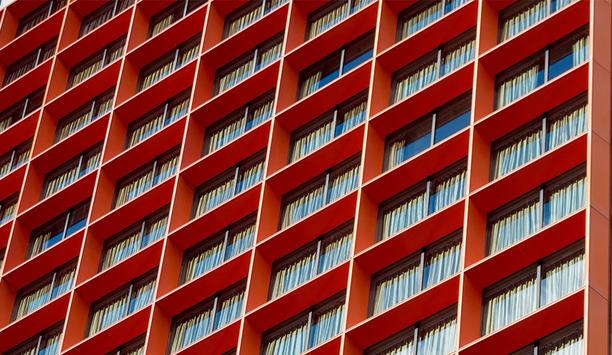From August to November, areas of Western North America brace for fire seasons that grow increasingly more destructive. 2020, in particular, has brought the United States some of the most destructive wildfires seen throughout US history. In California alone, over 4 million acres have been burned in over 9 thousand incidents, claiming 31 lives and over 10 thousand structures.
When looking at the totality of fire damage in all of Western North America, this number nearly doubles, with over 8 million acres devastated by fires. This staggering number is 2 million more than the previous 10-year average, which points to the continual increase in fires affecting homes, businesses, and lives in the areas in which they run rampant. With the winter bringing even more potential for fires to emerge in Southern California as warming and drying conditions create the perfect opportunity for fires to spread, the need for fire-resistant homes has never been greater.
A Recipe for Disaster
Since the 1800s, air temperatures have steadily continued to rise. While globally, these temperatures have risen by 1.8 degrees Fahrenheit, California has experienced a rise in temperatures by nearly 3 degrees. Since the 1800s, air temperatures have steadily continued to riseThis drastic increase in temperature results in the hot air being able to hold more water vapor, draining moisture from plants and soil. Drier soils and vegetation create the perfect environment for fires to rapidly spread through the easily burned fuel. Since the 1970s, Cal Fire has extended the fire season by 84 days but has also publicly stated that there is no longer what they consider to be a “fire season” since fires affect the state throughout the year.
Homes facing the greatest threat from the fires are those built on the “wildland-urban interface,” or the areas where homes are located close to open space overgrown with brush and foliage. The California Department of Forestry and Fire Protection has identified nearly 5 million homes and 200 communities located within this vulnerable zone, making the need for fire-resistant building essential.
Building Fire-Resistant Homes
With 10,488 structures destroyed in the 2020 California wildfires, building fire-resistant homes are important for the safety and longevity of the occupants and the structure. Wood building materials have been ranked third as the first-combusted material in home fires by the National Fire Protection Association. Materials like steel provide increased protection against firesThis makes the material extremely dangerous, especially in areas that often face the threat of destructive wildfires.
Homebuilders need to consider this important fact when designing the homes to be built, especially in the Western US. Materials like steel provide increased protection against fires, as steel is non-combustible and does not provide a source of fuel for fires. Instead of wood, which easily combusts when temperatures reach over 500 degrees, steel studs do not ignite when exposed to the same temperatures. Without the ability to add fuel to a spreading fire, steel studs protect the integrity of a home’s structure. Even if other non-combustible materials are used during construction, the failure to build a non-combustible steel frame will spell disaster for a home facing a wildfire.
With steel as a primary building material, homeowners can benefit from lower costs of home insurance, in addition to the increased protection from fires. Some contractors are using prefabricated steel frame wrappings that are covered in non-combustible insulation. Many are also implementing metal roofs in newer constructions.
Emerging building methods and materials
However, besides steel, there are many emerging building methods and materials that offer fire protection. As people rebuild their homes from the fires of this year, a trend that has emerged includes incorporating solid wall construction. This construction method provides no materials for a fire to burn, as it is concrete on the inside, followed by a layer of foam insulation, and covered with more concrete or stucco.Other construction methods include steel grids with foam inside
Other construction methods include steel grids with foam inside, that are then covered with concrete blown onto the frame. This method can provide the home with fire resistance for up to 4 hours, giving the home enough time for the fire to pass. New home designs are also passing up on attics and soffit vents, which can allow embers to blow inside and ignite the home.
In addition to the construction of a home itself, landscaping methods can further protect the home from wildfires. If the area surrounding a home is filled with dry, combustible vegetation, the fire will be able to quickly engulf the home, spelling disaster if the house is not built with fire-resistant materials.
The Future of Construction
As the danger and devastation of wildfires continue to increase, construction needs to adapt to protect homes and the lives that live inside them. There has never been a greater need for home builders to adopt fire-resistant home building methods, since each year, the incidence of fire grows at an increasing rate. Fire-resistant homes are the future, especially in areas such as California, where drought and dry conditions create the perfect recipe for the fast-spreading wildfires.
Non-combustible materials such as steel are playing an integral role in this space, as it does not add additional fuel to a fire that is already burning out of control. When combined with other fire-resistant building methods, homes are better protected from destruction. Hopefully, as these methods see an increase in their adoption, fires will destroy fewer homes and claim fewer lives.


















